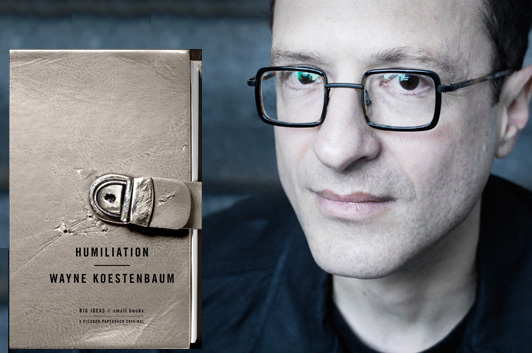Read This: Humiliation, The Devil All The Time, etc.

In this week’s Character Approved post, I talked about Humiliation, Wayne Koestenbaum’s contribution to Picador’s “Big Ideas/Small Books” series. It’s an intriguing philosophical exploration of some of the issues surrounding humiliation: Why do we feel it? Why do we inflict it on others? Why do we feel drawn to other people’s humiliations? What can we learn from it? Koestenbaum gets at these questions through a combination of literary analysis, cultural criticism, and autobiographical reflection that serves to keep the stakes high throughout the conversation. One aspect of the case I wound up thinking a lot about was the idea that television has, pretty much from the beginning, been rooted in delivering other people’s humiliation as entertainment, from Candid Camera up to American Idol, but it felt to me like that programming model is more pervasive now than it’s ever been, so I asked Koestenbaum if he had any insights into that.
“We like to regard the pain of others—to paraphrase the great Susan Sontag, who knew about how to regard,” Koestenbaum emailed back. ” We (the United States) are a covertly religious culture (not so covertly!), and our bathetic religious exercise (our holy calisthenics) is to watch the purgation rituals (the baptism-through-shame) of groveling, mewling exemplars. We like to hang around in crowds and witness the drecky martyrdoms of talkaholics.” The key thing, though, is that it needs to be real, and that gives us a clue as to the explosion of reality TV shows in, let’s say, the last decade: “We understand, via television, that there’s something humiliating about the simple fact of being alive; and TV takes this bare essence—aliveness—and turns it into disposable, entertaining meat.”
(Koestenbaum is careful to emphasize, however, that surviving humiliation can be a liberating experience, in part because we can learn to recognize its universality, that we are not alone in our shame and our pain.)
I’ve been writing about some other cool books recently: Last week’s Character Approved post was about Donald Ray Pollock’s The Devil All the Time, which is easily one of the most disturbing (in the good sense of the word, from a critical standpoint) novels I’ve read in a long, long time. The standard line on Pollock from reviewers is that he’s working in the vein of Flannery O’Connor, and I can see that, but I also think there’s a strong dose of Jim Thompson in there, too.
Meanwhile, over at Shelf Awareness, I had one review on Thursday where I dug into the virtual-reality quest novel Ready Player One, which is like a mashup between Neal Stephenson’s Snow Crash and a love letter to 1980s pop culture, and then again on Friday with Low Town, a downbeat noir story with the added twist of a just-past-medieval fantasy setting. Both these novels have strong inventive impulses running through them, although I’d probably give the edge to Low Town if you asked me straight-up which one to read first, because I felt like that story was just a bit more tightly constructed, rooted that much more firmly in the characters than the setting. (Setting and character are important to both, to be sure; I’m just saying Low Town proportions the two differently.) They’re both entertaining reads, though, and I’m sure fantasy fans will have fun with them.
5 August 2011 | read this |

 Our Endless and Proper Work is my new book with Belt Publishing about starting (and sticking to) a productive writing practice.
Our Endless and Proper Work is my new book with Belt Publishing about starting (and sticking to) a productive writing practice. 
